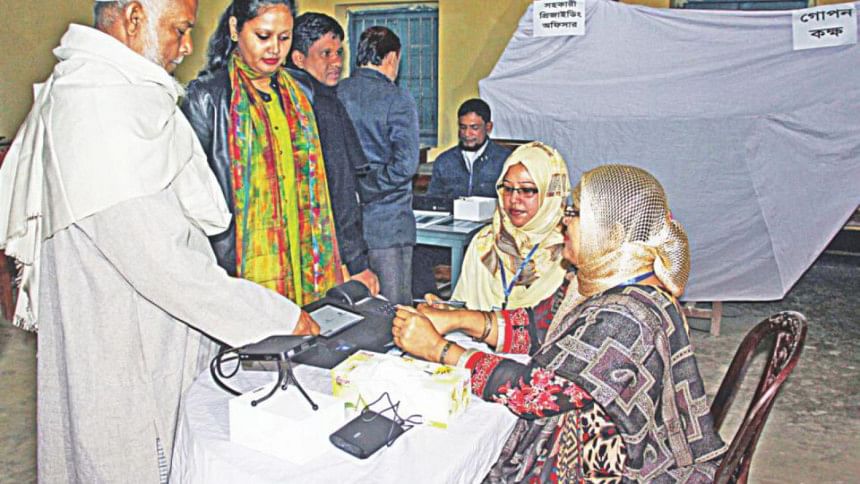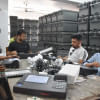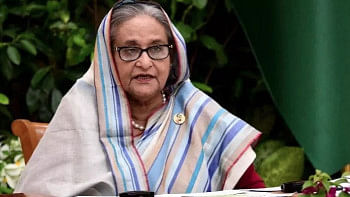The pros and cons of EVMs

The recent decision by the Election Commission to introduce Electronic Voting Machines (EVMs) has raised a lot of eyebrows. At the outset, it must be pointed out that EVMs are nothing new—they have been in use in many countries around the world for nearly two decades, and even in our country, EVMs have been used in local elections for several years now. In fact, on the face of it, it all seems to be in line with the Digital Bangladesh thrust of the government in gradually transforming all citizen services into digital ones—so why not voting.
EVM technology, however, has not been found to be completely fool proof, tamper-proof or fraud-proof. From Australia to India to Norway to Venezuela, more than 20 countries in the world have canoodled with electronic voting systems in the last 20 years with varying degrees of adoption or rejection. Mechanisation of voting and counting has been around for even a longer period. In the USA, voting machines that punch holes for selected candidates on ballot cards for mechanised enumeration (machine counting) have been around for decades. But nobody forgets the "hanging chad" vote recounting affair in the 2000 presidential election in the state of Florida, which cost Al Gore the election, as nearly 3,000 ballots that were evidently punched for Al Gore were discarded as per a Supreme Court ruling citing that the ballot holes were not fully punched through as per election rules. In the aftermath of this bitter experience of mechanisation in voting, the USA is lagging behind most nations when it comes to adoption of any measure of mechanisation in voting or vote-counting such as the use of punch-cards, Optical Mark Readers (OMR), or EVMs.
India is one of the pioneers in EVM use and started experimenting with designing and using EVMs as early as the 1980s. In the early days of introducing the EVMs on a small scale in some local-level elections, the EVMs were seen more as a novelty with few cries of fraud and tampering. However, the widespread use of EVMs on a national scale started in 2004, leading to nearly 60 percent of votes being cast and counted via EVMs in the 2009 parliamentary elections. The Election Commission of India kept the design of EVMs a closely guarded secret to prevent tampering and fraud. But since the 2009 elections, widespread accusations of tampering and fraud prompted many court cases that ultimately went to the Supreme Court which ruled in October 2013 that voter-verified paper audit trail (VVPAT) is essential to prevent the possibility of vote tampering and voter fraud when using EVMs, and the ruling ordered the Indian Election Commission to roll out VVPAT in all elections by 2019.
VVPAT is a mouthful even in an age of digital acronyms such as LOL, SMS and TBH flying about in common parlance. What this basically means is that EVMs are nominally direct-recording electronic (DRE) voting machines that voters simply have to trust in good faith as they cannot verify on their own whether their votes have been correctly marked and tallied. Bring in VVPAT—an addition to the EVM that prints a paper ballot marked with the selection made in the EVM and that is visible through a transparent window in the machine which the voter can visually verify; and then, when the vote is confirmed on the EVM, the correctly marked paper ballot is dropped into a sealed ballot box. These voter-verified paper ballots can be optically or manually counted in case there is a doubt about the EVM tally.
EVMs are simple machines from the standpoint of electronic designing. It needs a simple processor, a tiny electrically erasable programmable read-only memory (EEPROM) and a few buttons. Most EVMs don't even use encryption in storing data. In an ideal world, such simply designed machines would suffice, which can be set up for an election at a minimal cost and time while tallying millions of votes in a matter of minutes after closing. But we don't live in an ideal world. And the temptations for tampering, fraudulent manipulation and befooling the public are all too great when the prize is no less than the right to control multi-billion-dollar treasuries.
The trust deficit for DRE voting machines around the world is rising by the day. Even in Brazil, where a number of national elections have been conducted since 2000 using EVMs, there appears to be a huge backlash over increasing levels of complaints on tampering and fraudulent vote tallies armed with independent security assessments of Brazilian EVMs by two leading technical universities of the country, which openly questioned the infallibility of the DRE voting machines claimed by the Brazilian election authorities.
In Europe, some of the most technologically advanced nations such as Ireland, Italy, Finland, Germany, Holland and Norway have gone back to paper-based voting after brief experiments with EVMs in the 2000s. Only Estonia and Belgium remain fully committed to EVMs but with VVPAT support.
EVMs certainly can reduce the hassles of organising and conducting voting, especially in countries with large populations such as ours. However, getting people familiar with electronic voting and earning their trust for enumerating each and every vote in a transparent and tamper-proof manner requires some form of concurrent voter verifiable paper ballots, and the VVPAT is the most promising implement that can ensure hassle-free electronic voting and verifiable paper ballots to overcome the trust deficit in a black-box voting machine that the public cannot peer into.
Obviously, adding the VVPAT will increase the cost and logistical complexity of electronic voting systems but that would be a worthy enterprise considering the huge prizes at stake.
Habibullah N Karim is an author, policy activist, investor and serial entrepreneur. He is a founder and former president of BASIS and founder/CEO of Technohaven Company Ltd.
Email: [email protected]










Comments